
Hip abduction exercise
Studies have shown that strength exercises help to improve the bone mineral density and the hip is one of the major areas where a loss of bone occurs. Therefore performing hip abduction exercises in your workout can help to prevent a loss of density or improve the density of the pelvic bones. They can be performed using the abductor fixed resistance machines in most gyms or by using a resistance band tied to a fixed object. Another way to perform is by standing up straight with a resistance band wrapped around each ankle, perform the abduction movement (one leg away from the other) or while lying down. This stresses the abductor muscles to strengthen the hip area.
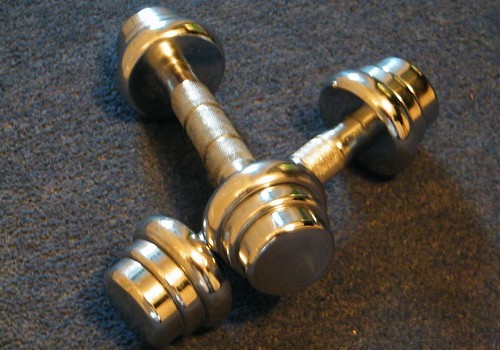
Free weight exercises
To increase the bone density and lower the risk of problems caused by osteoporosis you can add using free weights to your work out. The main exercises using a barbell that help increase density are weighted squats and deadlift for the lower body in particular the hip area, also the deadlift helps to increase density in the back which is one of the most effected areas. Using weights increases the force applied through the bone and joints which in turn strengthens the bone and increases the density, if you are already suffering with osteoporosis make sure to use a low weight to start to avoid putting too much stress on the bone and causing a possible fracture. Also it is important to lift slowly and in a controlled manner two or three times a week.

Osteoporosis the basics
Osteoporosis occurs when there is low bone mineral density - calcium and mineral content in the bone - which causes them to break easily. It is more common in older people when the bone deteriorates naturally but it can also be seen in obese or inactive people. Not partaking in regular exercise will cause the bones to slowly weaken through not being used and strengthened which can increase a persons risk of osteoporosis at a younger age. In the US, over 40 million people have already been diagnosed with this disease with the leading factor being obesity, other risk factors include gender (women are more susceptible) and ethnicity as Black and Hispanic races are at a lower risk.
- Important notification about information and brand names used in this slideshow!
- Photo courtesy of MartinPoulter by Wikimedia Commons : en.wikipedia.org/wiki/File:DEXA_scanner_in_use_ALSPAC.jpg
- health.clevelandclinic.org/2012/08/the-best-workouts-for-osteoporosis/
- http://www.lifescript.com/health/centers/osteoporosis/tips/build_up_your_bones_6_doctor-recommended_workouts.aspx
- http://www.webmd.com/osteoporosis/guide/osteoporosis-exercise
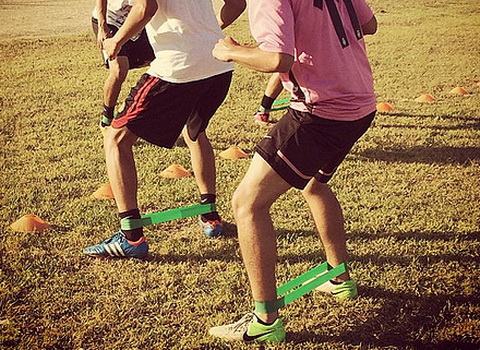
Resistance band step-outs
Using resistance bands can heighten a workout to boost the mineral density of your bones. Working specifically the lower body in particular the hip, step outs are good for people of all ages to complete. Using a looped band stand inside the loop, make sure to use a band that is the correct size that provides tension when standing just slightly wider than shoulder width apart. With one leg maintain balance and using the other leg step out as far as you can then return to shoulder width, repeat for a period of time or a set number of reps and then switch to the other leg.

Walk a little
Suffering with osteoporosis can make controlling your body weight difficult when you are unable to run or jog, but introducing a gentle walk into your daily routine will help burn fat and build bone density. Putting a small amount of weight and force through the lower leg bones such as femur and pelvis will stimulate bone growth and combat against the disease, walking for just 15 minutes every day you will see a big improvement. Try changing your routine so it is not a chore such as getting off the bus a stop earlier on the way to work.
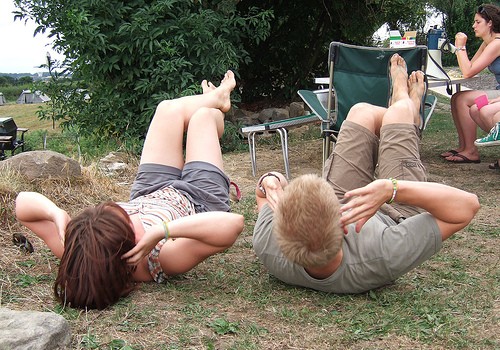
Exercises to avoid
Any exercise that puts a large force through the bones and joints must be avoided because with weaker bones simple activities can be taken for granted and fractures can occur very easily. Such activities are games or exercises that involve jumping, running or bounding. Also avoid extreme stretching of the larger muscle groups such as the quadriceps and hamstrings as they larger the stretch the more tension that is being applied to the bones they are attached to. Spinal flexion or rotation should be avoided as the spine being a risk area can become damaged easily during these movements so be sure to change the exercise to suit your needs.
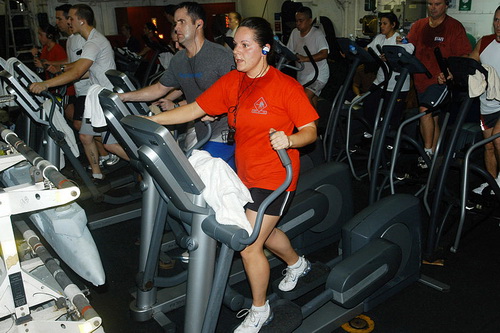
Elliptical training machines
The elliptical or cross trainer machine is useful for a cardiovascular workout but it is not as high impact as the treadmill or stepper. Because it is less weight bearing it is not as effective to prevent osteoporosis but it is a very good choice if you already have low bone density and want to continue exercising. It will also build good muscle tone and strength in the legs which can help to stop falls from poor balance that could lead to fractures. Also because it is low impact it is a great machine to include for sufferers of osteoporosis who want to maintain a healthy body composition while maintaining bone density.
- Important notification about information and brand names used in this slideshow!
- Photo courtesy of U.S. Navy photo by Mass Communication Specialist Seaman Matthew Haws by Wikimedia Commons : commons.wikimedia.org/wiki/File:US_Navy_070512-N-1525H-018_Hospital_Corpsman_2nd_Class_Rachel_Tisdale_works_out_on_the_Elliptical_Machines
- www.webmd.com/osteoporosis/guide/osteoporosis-exercise
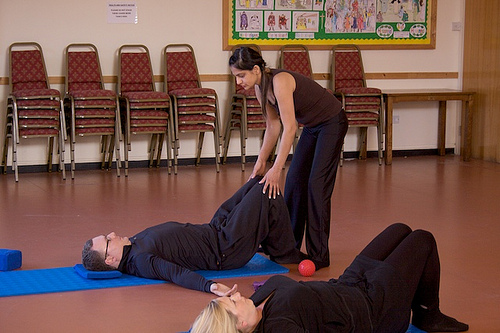
Nonimpact activities (yoga, pilates, tai chi,...)
For many sufferers of osteoporosis high impact activities are virtually impossible without the risk of bone damage. So to maintain fitness and keep the body composition healthy you can use non-impact activities such as yoga, Pilates and tai chi. These types of exercises will put stress on the body's joints, muscles and bones without applying a huge force through the bones and cause injuries for people with lower density. Tai chi is great for relaxation as it can be completed sitting down if needed. Other similar non impact activities are swimming, however this is great for fitness but does not help increase bone density as it is weightless; so it is not useful for someone who is at risk of this disease and is looking to prevent it.
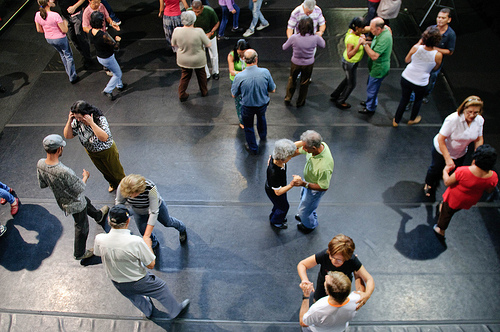
Dancing
Dancing is a great way to exercise with so many different styles to choose from with a lot of styles being low impact. There is very little jumping or bounding on hard surfaces which is what can cause bone damage. A study has been performed on older females and their bone density changes after a 12 week dancing program, the study found that after a period of dancing the spinal bone density increased and there was more activity of bone development. Sufferers of osteoporosis can choose dancing as a great substitute to traditional exercising methods to keep their body weight in control.
- Important notification about information and brand names used in this slideshow!
- Photo courtesy of michael_swan by Flickr : www.flickr.com/photos/mmmswan/6782269525/
- www.ncbi.nlm.nih.gov/pubmed/9431266
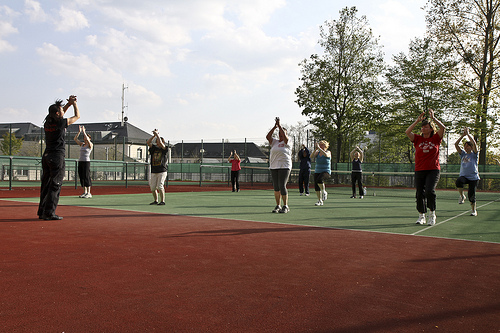
Low-impact aerobics
The term low impact means not applying a force through the bones and joints by landing on a hard surface, so this type of aerobics is often performed on soft surfaces or even sitting down. The main benefits to aerobics is to improve the cardiovascular health of the body by stressing the heart and lungs which in turns lower the risk of heart disease, often associated with older people as is osteoporosis. Low impact aerobics also does not put undue stress on the joints particularly in the lower body, whereas normal aerobics puts the hip under a lot of pressure and tension and as this is one of the most common areas for osteoporosis changing to low impact can be very beneficial.


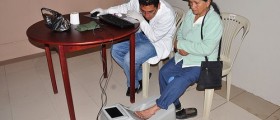

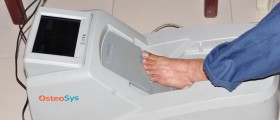






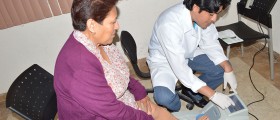
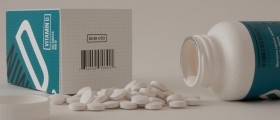
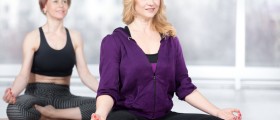
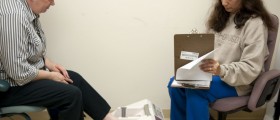


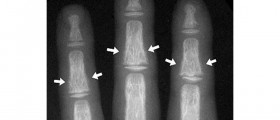
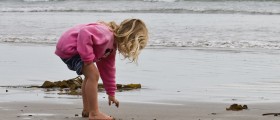
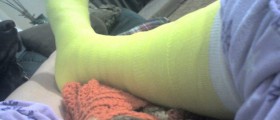
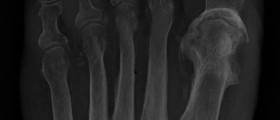


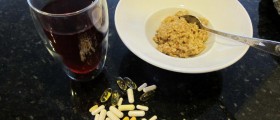


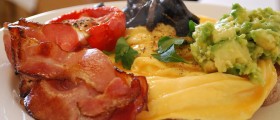
Your thoughts on this
Loading...